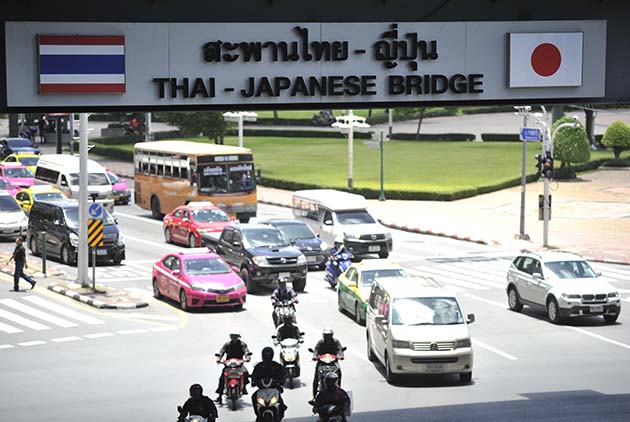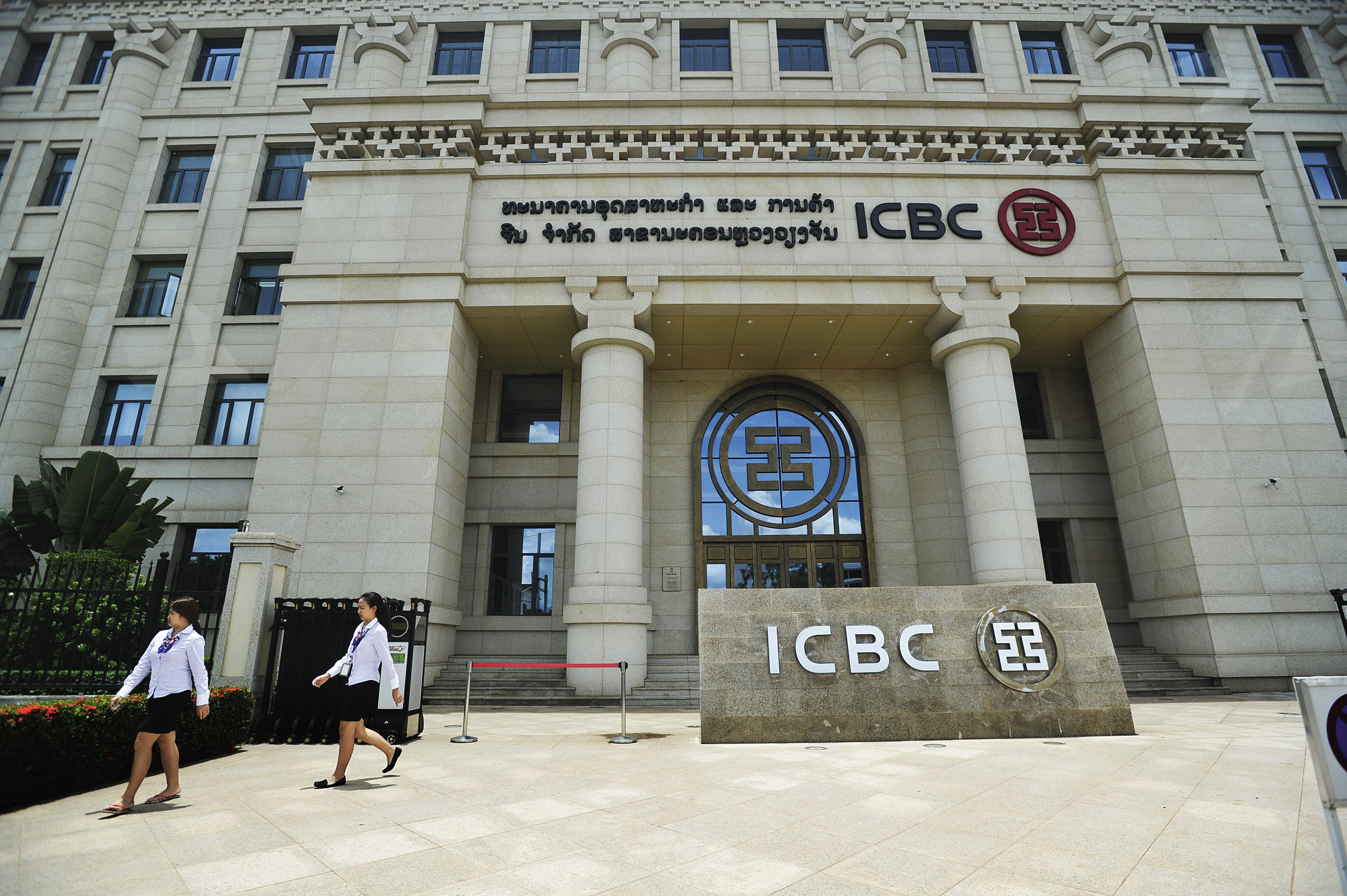China, Japan, Korea Going All In
The Battle for the Mekong River

Source:Kuo-Tai Liu
Building strength in Southeast Asia means developing strongholds along the 4,000-kilometer Mekong River. This strategic waterway has become a strategic battleground for China, Japan and South Korea.
Views
The Battle for the Mekong River
By Brian Chen, Elaine HuangFrom CommonWealth Magazine (vol. 627 )
The Mekong River – strategically located in areas rich in natural resources, a jewel fiercely contested by European colonial powers during the Age of Discovery.
Today, foreign powers continue the fight to plant their flags and battle for supremacy along the mighty river.
Chinese President Xi Jinping has adopted the “One Belt, One Road” strategy to penetrate this high growth region on China’s periphery. But Beijing is not alone, with Japan and South Korea aggressively trying to establish their own footholds along the Mekong.
Competing Strategies
Of the three Asian economic powers, Japan was the earliest to enter the Greater Mekong region, using a three-pronged strategy of “investment, trade and assistance” to steadily deepen ties with the five Mekong countries in the Association of Southeast Asian Nations (ASEAN) – Cambodia, Laos, Myanmar, Thailand and Vietnam.
It began investing more aggressively in the region in the 1970s, especially targeting Thailand and Vietnam.
Kristy Hsu, program coordinator of the Taiwan ASEAN Studies Center at the Chung Hua Institution for Economic Research, says most of Japan’s investment in the region has been made through the Asian Development Bank’s “Greater Mekong Subregion Program.”
A Laotian reporter for the Vientiane Times told CommonWealth that most Japanese projects in the region are handled through the Japan International Cooperation Agency (JICA).
“If, for example, they want to come to Laos to build a hydropower plant, they first study the project for four to five years before beginning construction rather than building the project quickly and leaving after making their money,” the reporter says.
Because of that investment approach, Japan has built a strong foundation and achieved a leadership position in the Greater Mekong region. Its emphasis on teaching people how to fish rather than giving people fish has also gained the acceptance of local communities.
A JICA worker who has been in Indochina for seven years confirmed the observation of the Vientiane Times reporter. “When Japan goes into a country, it first does a study to confirm a project’s feasibility before preparing a large sum of funds to invest for the long term. The approach is a bit slower but also more in-depth,” the JICA worker says.
China first implemented a “Go Global” strategy after 2007 to guide its overseas economic expansion. But it was only after Beijing initiated the “One Belt, One Road” policy following Xi Jinping’s rise to power that it began to step up investment in the Greater Mekong region.
“It did so to build strategic partner relations with ASEAN countries and deepen the interconnection between China and Southeast Asia,” says Wu Fu-cheng, the deputy director of the Taiwan Institute of Economic Research’s (TIER) Economic Development Strategic Planning Center.
Beyond its value as a geopolitical strategic objective, the Greater Mekong region was also a major target market for China’s exporting of its industrial capacity.
South Korea’s systematic approach to investing the region started relatively late, the annual meeting of the foreign ministers of South Korea and the five Greater Mekong countries beginning only in 2011. In 2014, the ministers reached agreement on a three-year “Mekong-Republic of Korea Plan of Action” to strengthen Seoul’s investment presence in the region and promote economic cooperation.
The influence that foreign investors hold in the Greater Mekong region today even more clearly reflects the three pillars of co-opetition in the region – China’s “One Belt, One Road,” Japan’s “Greater Mekong Subregion Program,” and Korea’s “Mekong-ROK Plan of Action.”
Using such weapons as foreign direct investment and infrastructure development, the investment war between the three countries in the Greater Mekong has formally begun and is shaping clear spheres of influence.
China: Focused on Laos, Cambodia, Myanmar
Since the China-ASEAN Free Trade Area came into being in 2010, the Greater Mekong region has become an important strategic platform for China to “Go Global,” and that became even more pronounced with the promotion of the “One Belt, One Road” strategy.
Because Japan had already been entrenched in Thailand for many years, and Beijing and Hanoi were at loggerheads over territory in the South China Sea, China was particularly aggressive in investing and setting up cooperation projects in Laos, Cambodia and Myanmar.
 In Vientiane, China’s ICBC (Industrial and Commercial Bank of China) has built a headquarters that looks like a little palace.
In Vientiane, China’s ICBC (Industrial and Commercial Bank of China) has built a headquarters that looks like a little palace.
According to ASEAN figures, China has been by far the main source of foreign investment in Laos, Cambodia and Myanmar, investing more than twice as much in those countries over time as Japan and South Korea combined. Yet even then, China has not always been able to exert monolithic dominance in those countries.
“Border disputes between China and Myanmar have hurt China’s economic influence in the country,” TIER’s Wu explains. Many in Myanmar have also come to see China as a plunderer of its extensive natural resources, he says.
Another source of friction is the Myitsone Dam hydropower project planned by China in northern Myanmar at the head of the Irrawaddy River, the country’s economic lifeline. It was halted in 2011 during the tenure of former Myanmar president Thein Sein amid protests over its potential environmental impact and the need to relocate more than 10,000 households, and recent reports suggest China might shelve plans for the US$3.6 billion dam project for good.
Because of these many problems, China’s investment in Myanmar has been gradually scaled back since 2011.
Japan: Consolidation in Thailand
From its “Go Global” strategy to its “One Belt, One Road” initiative, China has put competitive pressure on Japan and its strategic deployment in the Greater Mekong region. In the first three years after Xi Jinping took power (2013 to 2015), Japan invested about three times as much in Thailand as it did during the final three years (2010 to 2012) of Xi’s predecessor Hu Jintao, quite likely reflecting the budding rivalry for influence in the area.
In 2013 in particular, Japan set a new record for overseas investment. Influenced by both the deterioration in relations between Tokyo and Beijing and soaring labor costs in China, Japan transferred a large amount of capital to ASEAN countries, especially Thailand.
“Japan mainly relied on investment in the car industry as a stepping stone into Thailand,” Wu says. Thailand has long been an investment hub for Japan’s auto industry because it’s a big producer of rubber and has a strong electronics industry.
The success of the Japanese car industry there helped pave the way for companies in the electronics, textiles and food processing sectors to move in. That and the country’s location at the heart of the Greater Mekong region has made Thailand the strategic core of Japan’s investment web in the area and its most important beachhead in the regional investment battle taking shape.
South Korea: A Late Entrant Focused on Vietnam
As for South Korea, its sphere of influence has become Vietnam, which has moved aggressively to sign free trade agreements with Western countries. Vietnam has many attributes, including its northern border with the southern Chinese market, its low labor costs, and an industrial supply chain that complements South Korea’s, that are considered beneficial to South Korea’s economic expansion overseas.
Though South Korea started investing in the Greater Mekong region relatively late, it has quickly reversed the structure of foreign investment in Vietnam with the help of its huge conglomerates (chaebols) chasing profits.
Beginning in 2013, when China was facing higher labor costs and excess capacity, Samsung led the way into Vietnam with a heavy injection of capital, especially in Bac Ninh province in northern Vietnam. Samsung formed an important electronics cluster there that became the company’s biggest production base outside of Korea.
“South Korea’s investment in Vietnam is not related to politics. It’s based on creating a division of labor in the industrial supply chain in East Asia,” Wu explains.
During the six years from 2010 to 2015, South Korea’s investment in Vietnam rose three-fold, and it replaced Japan as Vietnam’s leading source of foreign investment. By 2016, Samsung had a more than 20 percent share of Vietnam’s total exports, according to government statistics.
With Japan, China and South Korea laying down their foundations in the region, the high-growth Mekong River region is destined to be a major political and economic battlefield into the foreseeable future.
Translated from the Chinese by Luke Sabatier






